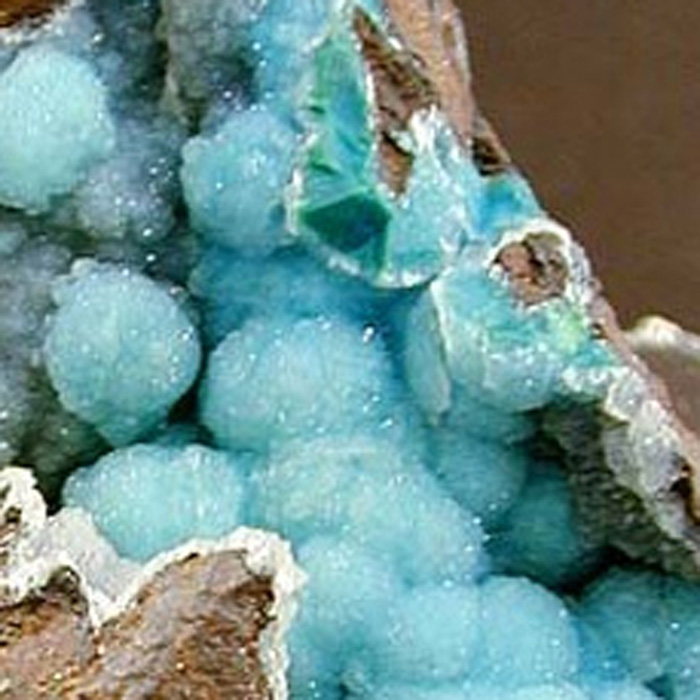Scientific Name: Hydrated copper silicate
Group: Silicates – phyllosilicates
Chemical composition: Cu2H2(Si2O5)(OH)4nH2O
Colors: Bright green or bluish crust due to copper.
Hardness: 2 to 4
Formation: Orthorhombic crystal; massive form.
Principal Sources: Chile, USSR, Zaire.
Special Notes: Chrysocolla is named from the Greek chrysos – “gold” and kolla – “glue” in allusion to the name of the material used to solder gold. It is typically found as glassy botryoidal or rounded masses and crusts, or vein fillings. Because of its light color, it is sometimes confused with turquoise. Commonly it occurs only as porous crusts unsuitable for gem use, but high quality, gem grade chrysocolla can be translucent and is highly prized. It is a minor ore of copper and found in the oxidation zone of copper deposits, often encrusting or replacing earler secondary minerals.

